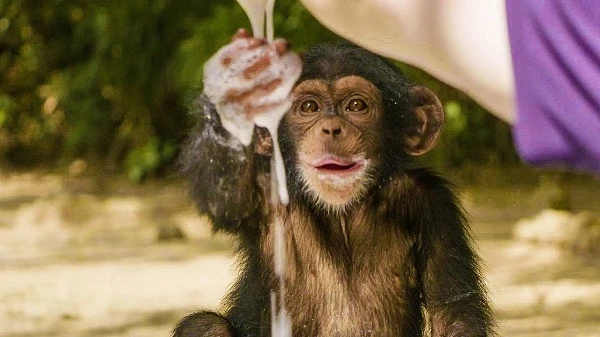What makes the human brain different? Study reveals clues
Blood substitute restores organs hours after the heart stops beating / Artemis I: NASA has missed the first launch window for its SLS rocket
What makes us human may also make us susceptible to neuropsychiatric diseases, the researchers discovered.
The study focused on the dorsolateral prefrontal cortex (dlPFC), a region of the brain that is unique to primates and essential for higher-order cognition. Using a single cell RNA-sequencing technique, they profiled gene expression levels in hundreds of thousands of cells collected from the dlPFC of adult humans, chimpanzees, macaques, and marmosets.
"Today, we view the dorsolateral prefrontal cortex as the core component of human identity, but still we don't know what makes this unique in humans and distinguishes us from other primate species." said Nenad Sestan, the Harvey and Kate Cushing Professor of Neuroscience at Yale, professor of comparative medicine, of genetics. and of psychiatry, and the lead senior author of the paper. "Now we have more clues."
To answer this, the researchers first inquired whether there are any cell types that are exclusive to humans or other non-human primate species studied. After grouping cells with similar expression profiles, they discovered 109 primate cell types that were shared, as well as five species-specific cell types. A type of microglia, or brain-specific immune cell, was unique to humans, while a second type was shared by humans and chimpanzees.

Baby chimpanzee (Illustrative image), (Source: BBC Earth).
The researchers discovered that the human-specific microglia type persists throughout development and adulthood, suggesting that the cells play a role in maintaining the brain rather than combating disease.
"We humans live in a very different environment with a unique lifestyle compared to other primate species; and glia cells, including microglia, are very sensitive to these differences," Sestan said. "The type of microglia found in the human brain might represent an immune response to the environment."
The presence of the FOXP2 gene was uncovered by an examination of gene expression in microglia, revealing another human-specific surprise. Because variants of FOXP2 have been linked to verbal dyspraxia, a condition in which patients have difficulty producing language or speech, this discovery generated considerable interest. FOXP2 is also associated with neuropsychiatric disorders such as autism, schizophrenia, and epilepsy, as demonstrated by additional research.
This gene exhibits primate-specific expression in a subset of excitatory neurons and human-specific expression in microglia, as discovered by Sestan and colleagues.
"FOXP2 has intrigued many scientists for decades, but still we had no idea of what makes it unique in humans versus other primate species," said Shaojie Ma, a postdoctoral associate in Sestan's lab and co-lead author. We are extremely excited about the FOXP2 findings because they open new directions in the study of language and diseases."
National Institutes of Health and National Institute of Mental Health supported the research. Among the other authors are co-lead author Mario Skarica, an associate research scientist in neuroscience at Yale School of Medicine; co-senior author Andre Sousa, an assistant professor of neuroscience at the University of Wisconsin-Madison; and co-senior author Stephen M. Strittmatter, the Vincent Coates Professor of Neurology and professor of neuroscience at Yale, chair of the Department of Neuroscience, and director of the Kavli Institute for Neuroscience.
Journal Reference: Shaojie Ma, Mario Skarica, Qian Li, Chuan Xu, Ryan D. Risgaard, Andrew T. N. Tebbenkamp, Xoel Mato-Blanco, Rothem Kovner, Željka Krsnik, Xabier de Martin, Victor Luria, Xavier Martí-Pérez, Dan Liang, Amir Karger, Danielle K. Schmidt, Zachary Gomez-Sanchez, Cai Qi, Kevin T. Gobeske, Sirisha Pochareddy, Ashwin Debnath, Cade J. Hottman, Joshua Spurrier, Leon Teo, Anthony G. Boghdadi, Jihane Homman-Ludiye, John J. Ely, Etienne W. Daadi, Da Mi, Marcel Daadi, Oscar Marín, Patrick R. Hof, Mladen-Roko Rasin, James Bourne, Chet C. Sherwood, Gabriel Santpere, Matthew J. Girgenti, Stephen M. Strittmatter, André M. M. Sousa, Nenad Sestan. Molecular and cellular evolution of the primate dorsolateral prefrontal cortex. Science, 2022; DOI: 10.1126/science.abo7257
End of content
Không có tin nào tiếp theo
